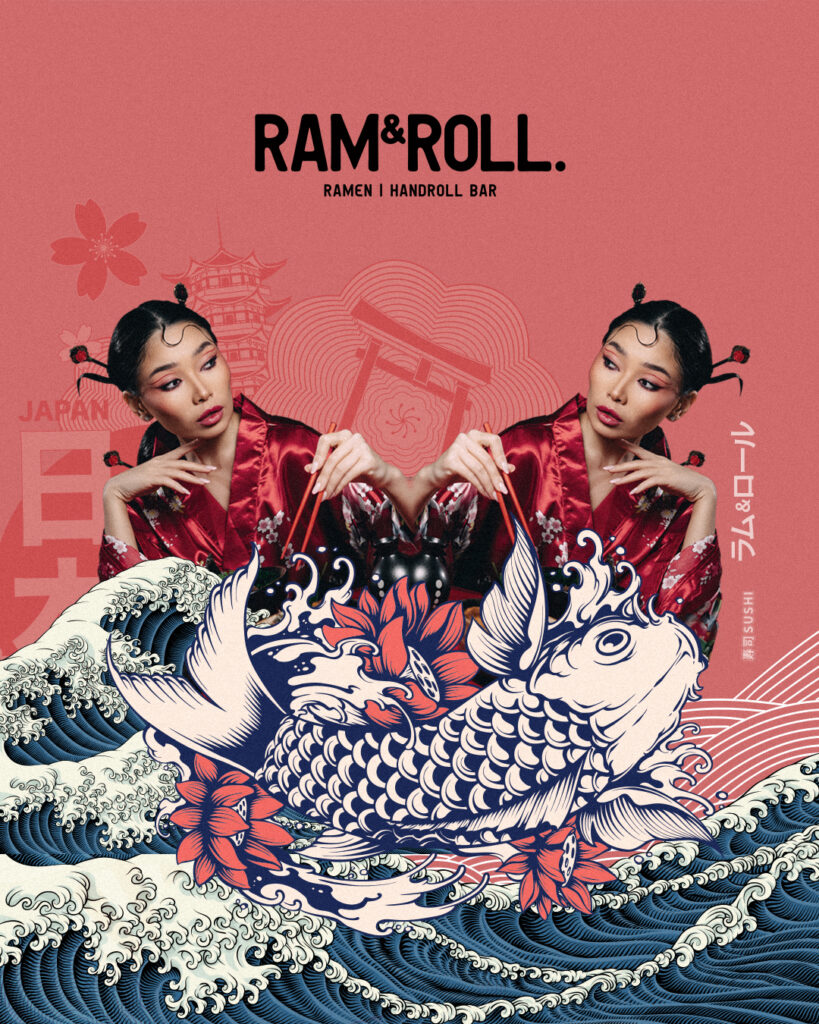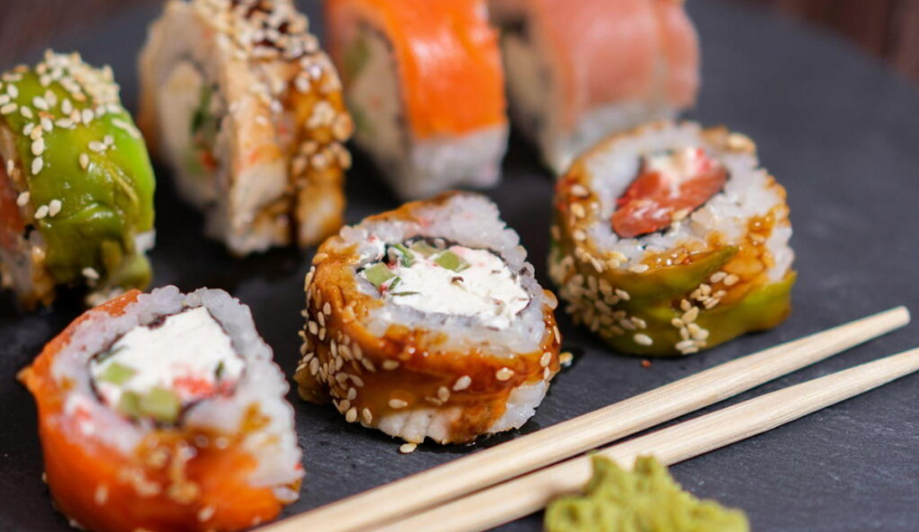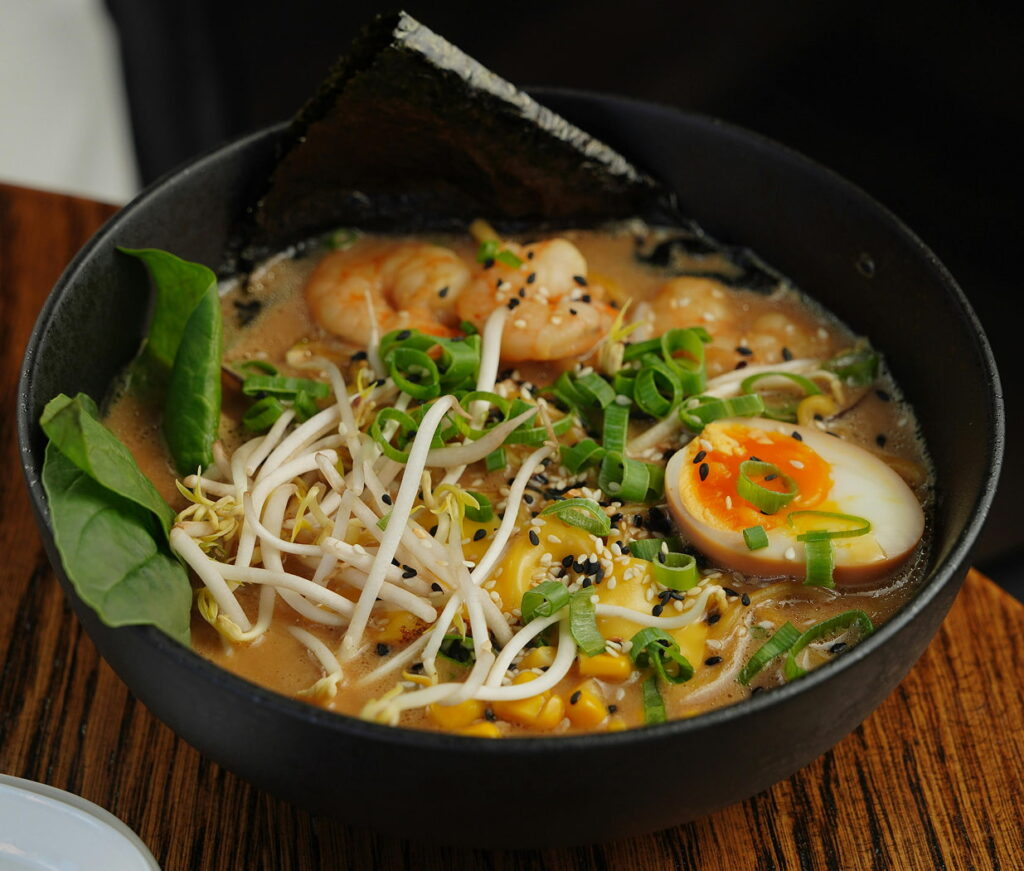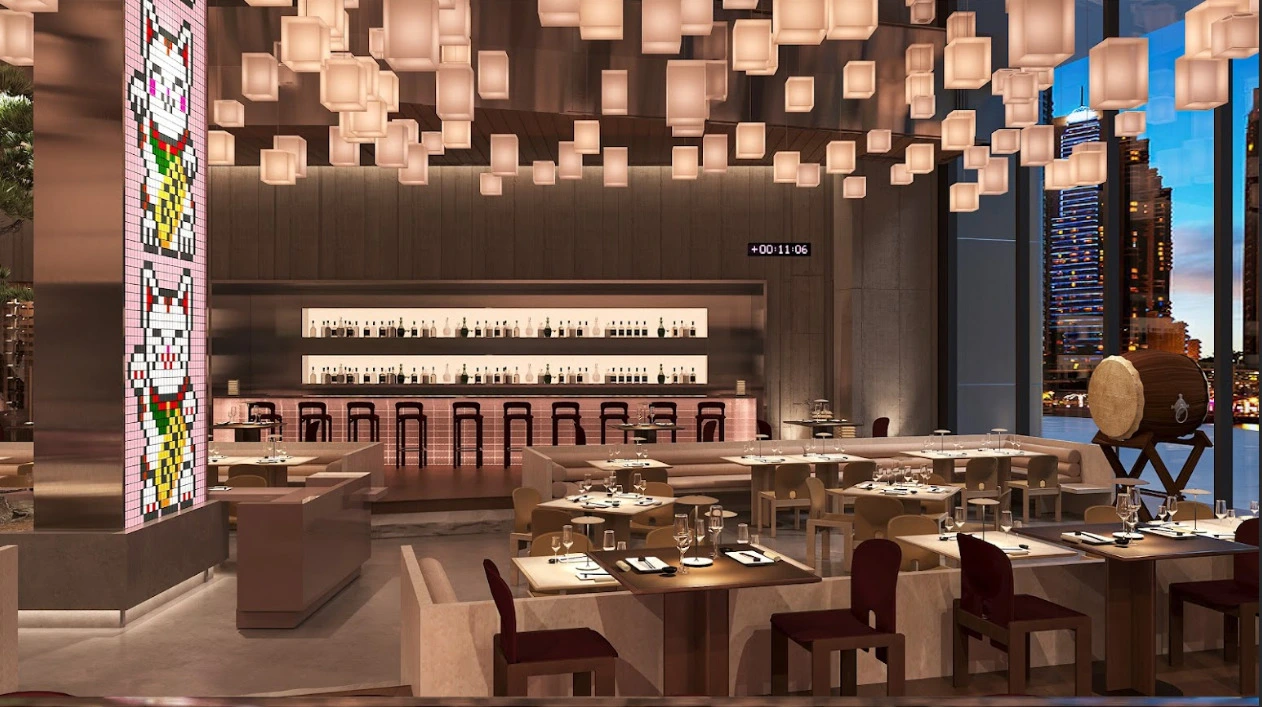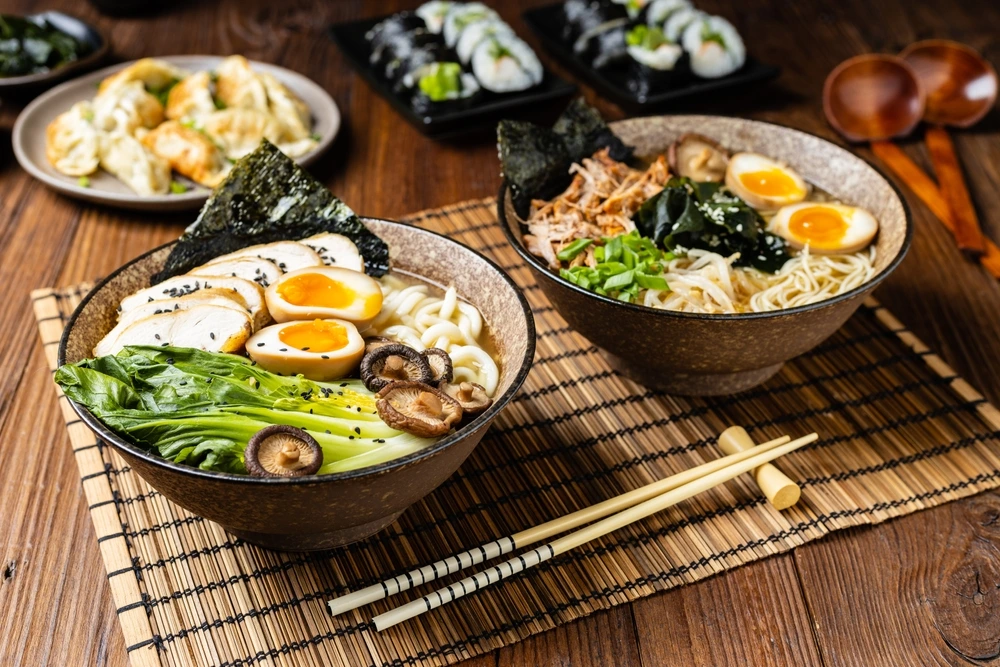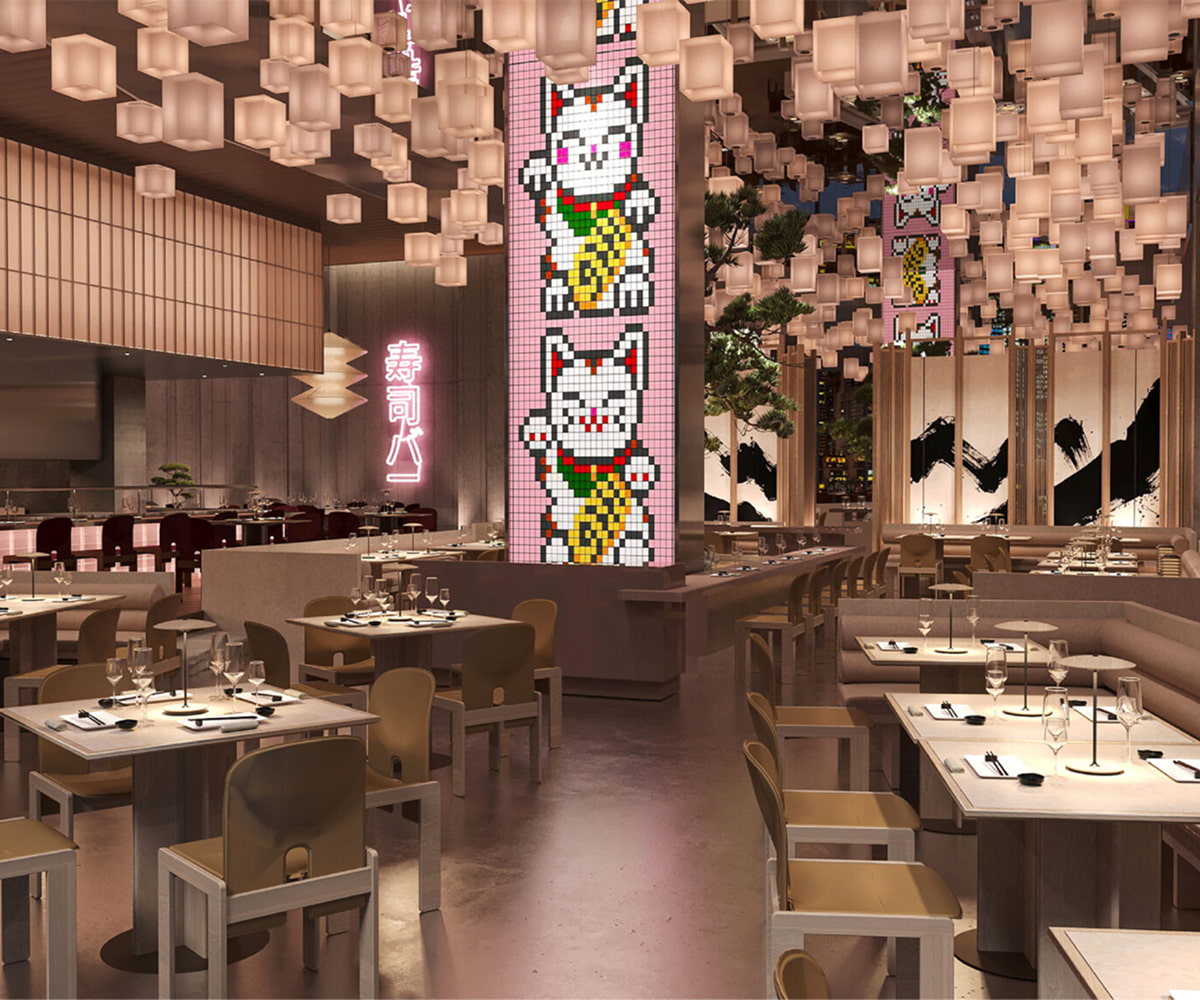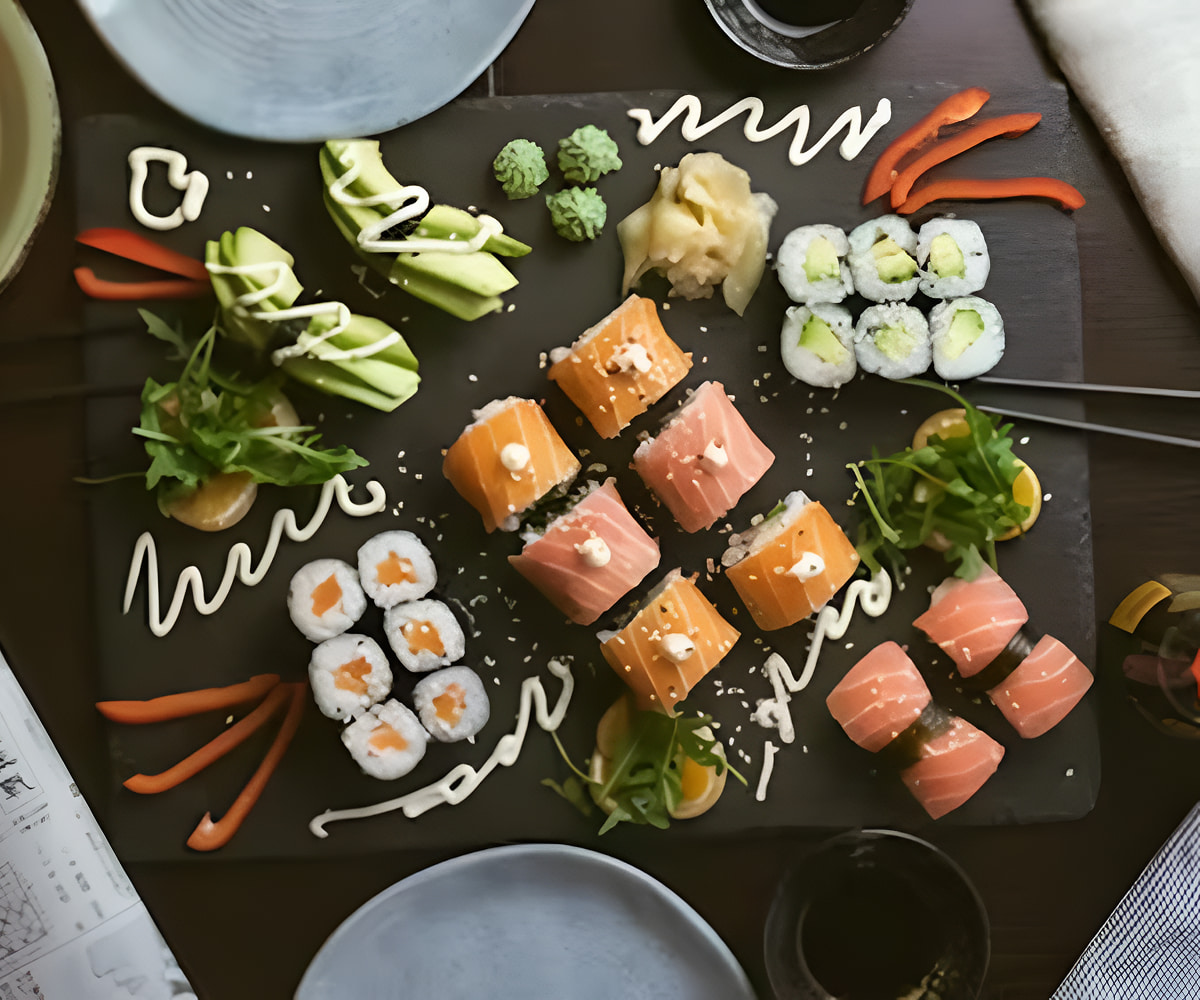At Ram & Roll at Kempinski The Boulevard, the role of presentation in Japanese cuisine is more than visual flourish—it is philosophy on the plate. Rooted in washoku principles and shaped by ideas from Zen aesthetics, every bowl of ramen, every handroll, and every carefully composed breakfast tray is designed to feel balanced, seasonal, and quietly luxurious. As Dubai’s modern Japanese dining destination preparing for its grand opening, Ram & Roll approaches plating as part of the experience: an invitation to pause, notice, and savor.
Key takeaways
- Presentation in Japanese cuisine reflects harmony, restraint, and nature, guiding how colors, textures, and shapes share space on the plate.
- Wabi-sabi influences encourage celebrating natural variation and seasonality, favoring organic lines and handcrafted tableware.
- At Ram & Roll, the visual composition of ramen, handrolls, and the Japanese-style breakfast deepens flavor perception and heightens mindfulness.
The core role of presentation in Japanese cuisine philosophy
In Japanese culinary thought, food is arranged to create harmony among elements—taste, aroma, texture, color, and sound. At Ram & Roll, that harmony starts with seasonal ingredients and flows through the forms they take on the plate. A slice of gleaming fish set at a gentle angle, rice grains aligned with intention, or a sprig of shiso adding a bright, herbal lift—these gestures transform a dish into a composed scene. This approach pairs naturally with our refined setting at Kempinski The Boulevard in Downtown Dubai, where the calm, contemporary backdrop lets each composition speak clearly.
Five ideas help shape that scene:
- Seasonality (shun): Ingredients are chosen at their peak, allowing color and aroma to feel alive. A garnish of young ginger, the first bamboo shoots of spring, or autumn mushrooms communicates time and place.
- Balance of the five colors: Whites, blacks, reds, greens, and yellows appear in dialogue, creating visual equilibrium that mirrors balanced flavor.
- Precision in cut: Classic techniques—such as thin, even slices for sashimi—are used not to show off skill but to honor texture, mouthfeel, and light-reflecting surfaces.
- Thoughtful negative space: Emptiness is part of the composition. Leaving room around a handroll or between ramen toppings helps the eye (and appetite) focus.
- Omotenashi (hospitality): Plating anticipates the guest—where the first bite should land, how chopsticks will approach a piece, how broth aromas rise when the bowl is lifted.
These principles guide Ram & Roll’s menu and inform how each dish is presented—never crowded, always considered, and designed to heighten a complete sensory experience. Explore how these ideas appear across the menu and plan your visit via our menu and reservation pages.
Wabi-sabi on the plate: beauty in natural variation
Wabi-sabi—the appreciation of impermanence and irregularity—shows up at Ram & Roll in quiet, tactile ways. A matte ceramic bowl with subtle speckling softens the sheen of ramen broth. A hand-formed plate frames two pieces of nigiri so that their edges aren’t perfectly mirrored, letting the fish and rice look alive rather than staged. The outcome isn’t messy; it’s poetic—minimalist plating that still feels human and warm.
Seasonality deepens this effect. A sprinkle of toasted sesame on a salmon handroll hints at nutty warmth in cooler months; a delicate edible flower in spring underscores lightness and color. The goal is not ornament for ornament’s sake but a story of time and texture. Even the direction of a garnish—tilted with the grain of the fish rather than against it—cements the natural flow of the composition.
Handrolls and sushi: precision that feels effortless
Handrolls at Ram & Roll are built for immediacy—rolled to order so the nori stays crisp and the rice retains a gentle warmth. In presentation terms, that immediacy guides choices: clean, linear lines; modest garnishes; and cuts that catch the light without looking rigid. Sushi rice is seasoned with quiet balance so that the fish is the focal point; a sliver of pickled ginger is placed just offset, inviting the palate to reset before the next bite.
Contrast—soft tuna against crisp nori, rich eel against bright citrus—plays a starring role. But contrast is never loud; it’s tuned. A few grains of black sesame can define edges and provide lift. A careful brush of soy can deepen umami without darkening the plate. The effect is elegant clarity. If you’re seeking refined handrolls in Dubai or guidance on what to try first, start with a classic pairing and allow the presentation to lead your senses.
Ramen: arranging warmth, texture, and aroma
Ramen is a study in orchestration. Ram & Roll’s broths—simmered for hours using authentic methods—arrive in bowls that highlight depth and clarity. Toppings are arranged so that the first glance tells a story: chashu overlapping the curve of the bowl, a marinated egg revealing its amber center, spring onions arcing across the surface to break up the sheen of the broth. The noodles sit slightly elevated, easy to lift, while seaweed adds a vertical accent that frames the bowl.
Each bowl balances richness and lift. Consider the interplay: the plushness of tonkotsu next to the clean lines of shoyu, or the aromatic pulse of a miso base tempered by crunchy sprouts. Presentation supports function—the way katsuobushi dances on heat, the way a slice of chili placed off-center signals warmth without overwhelming. For a deeper look at the approach and styles, browse our guide to ramen in Dubai and see how different broths and toppings shape both the look and feel of the bowl.
Japanese breakfast: a composed morning ritual
Ram & Roll’s Japanese-style breakfast translates philosophy into a serene morning tableau. Small plates and bowls are grouped like a gentle constellation: grilled fish aligned horizontally to echo the grain of the tray, pickles adding bright punctuation, a steaming bowl of miso soup placed where its aroma opens the palate. Rice is domed with intention, not pressed; fruit is sliced to reveal shimmer and freshness rather than showy geometry.
Color palette matters here: pale rice and tofu create calm, while greens and soft yellows provide soft energy. The presentation turns the first meal of the day into a mindful practice—unhurried, nourishing, and quietly celebratory. If a mindful start to the day speaks to you, explore our Japanese breakfast offering for details on seasonal pairings and morning specialties at Kempinski The Boulevard.
Tableware and setting: where modern Dubai meets tradition
The dining room at Kempinski The Boulevard is designed to be a sanctuary, allowing food presentation to breathe. Tableware choices underline that goal: matte glazes that don’t glare under light, dark lacquer trays that frame pale rice, and hand-thrown bowls whose subtle textures invite touch. The surrounding décor avoids visual noise, so the moment a dish lands, your attention is naturally guided to color, shape, and steam.
Modern lines meet traditional cues in small ways: the weight of a ceramic spoon, the grain of wooden chopsticks, the height of a glass chosen for a chilled tea. For pairings that echo this compositional care, consider our selection of sake, teas, and crafted non-alcoholic blends. You can preview pairings and serving styles on our page for Japanese drinks.
From kitchen to guest: presentation as hospitality
In Japanese cuisine, the most beautiful plating is also the most considerate. Ram & Roll’s culinary team arranges each component with the guest’s experience in mind: what the first aroma will be, how a bite will break, how the temperature reads when the bowl is lifted. That thoughtfulness is presentation in its purest form—hospitality made visible.
For guests, appreciating this philosophy is simple: notice the spacing and the quiet patterns; start with the lightest flavors and move toward richer ones; pause between bites to sense what the aroma, texture, and temperature are saying. The more you look, the more you taste.
Frequently asked questions
What is the role of presentation in Japanese cuisine philosophy?
Presentation shapes how we perceive taste, aroma, and texture. In the Japanese tradition, a composed plate mirrors a composed mind. At Ram & Roll, that means seasonal colors, clean lines, and plates designed to help flavors unfold gradually.
How does presentation enhance the dining experience at Ram & Roll?
By balancing elements—color, height, shape, and space—the plating gently guides your palate. Our ramen bowls, handrolls, and breakfast sets are arranged to be intuitive to eat, creating a relaxed, focused rhythm at the table.
Why is wabi-sabi important to the way dishes look?
Wabi-sabi embraces natural variation and time’s passage. A bowl with a soft ripple in the glaze or a hand-cut garnish that isn’t perfectly symmetrical can make the dish feel alive. This subtle irregularity adds warmth and character.
How does presentation influence ingredient selection?
Ingredients are chosen for peak freshness, complementary colors, and textures that layer cleanly. A crisp sheet of nori, bright scallions, or jewel-like salmon roe each has a visual role as well as a culinary one. Seasonality keeps the palette vibrant and true.
What should I order to appreciate the philosophy most clearly?
For clarity of composition, start with a handroll followed by a bowl of ramen, then a simple dessert—something like mochi or a tea to finish. You can plan a progression that suits your taste via the menu, explore our robata-grilled Wagyu for a dinner highlight, or reserve your table to experience the full flow in person.
Ram & Roll is preparing for its grand opening at Kempinski The Boulevard, bringing a serene, modern take on Japanese dining to Downtown Dubai. Until then, let the philosophy of presentation guide your appetite—and when you arrive, expect dishes that look as composed as they taste.
